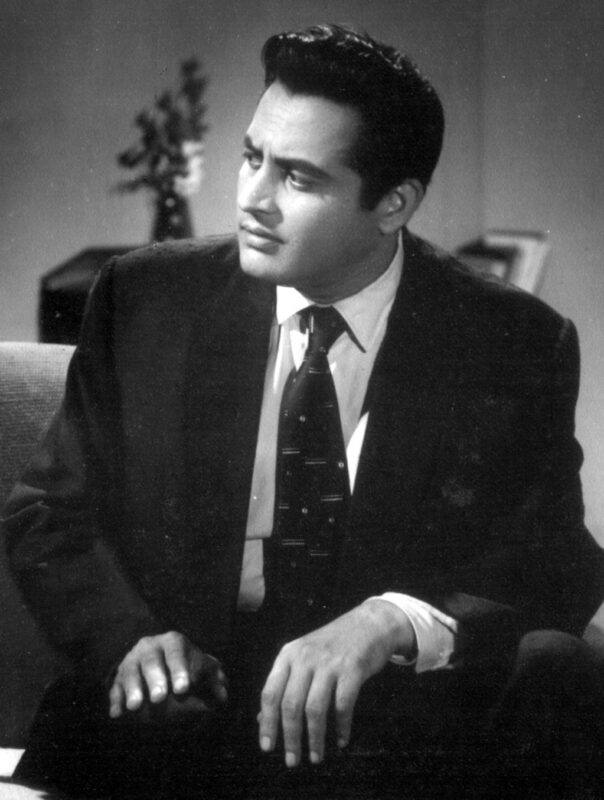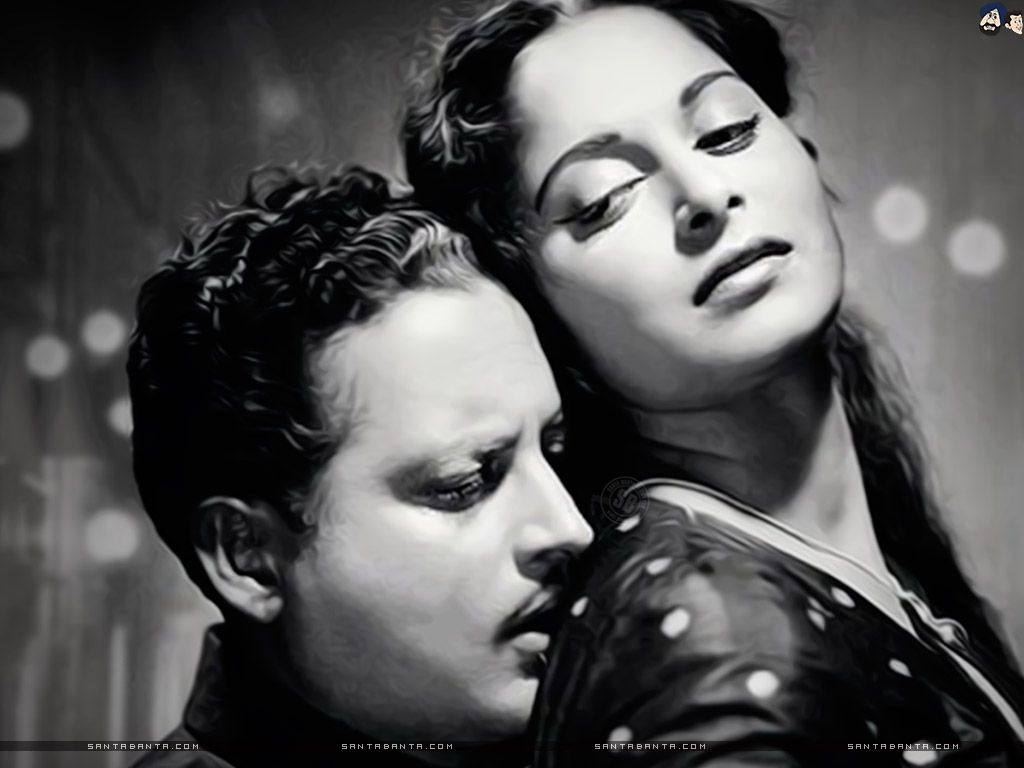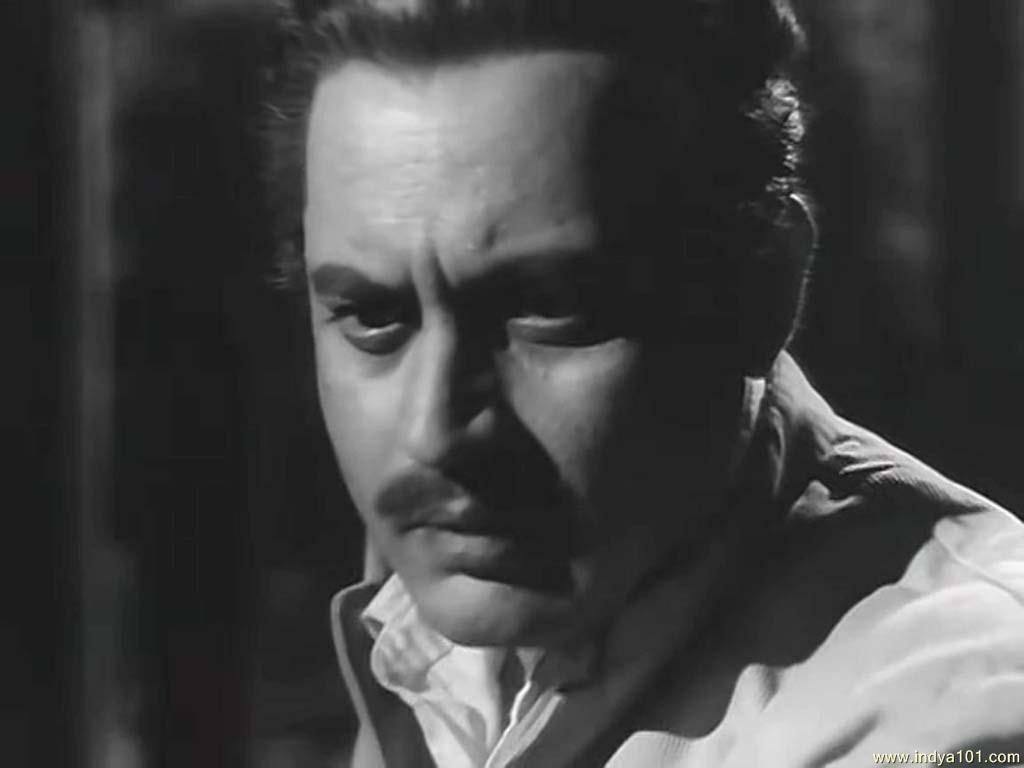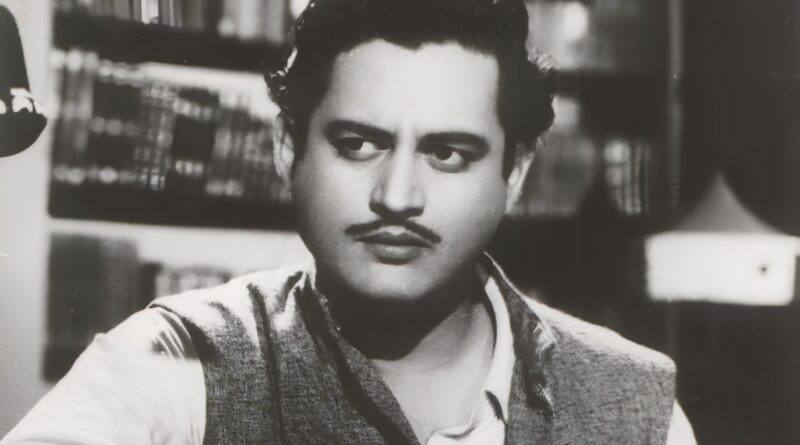World Of Guru Dutt: The Amazing Treasure Of 100 Years
Cover Story | August 2025 | The WFY Magazine
A century since Guru Dutt’s birth, his films still echo. Discover the man behind the poetry, shadows, and sorrow that shaped Indian cinema forever.
A Century of Silence and Song
On the 9th of July 2025, a hundred years have passed since the birth of one of Indian cinema’s most enigmatic and enduring geniuses, Guru Dutt. His name still whispers through the corridors of film schools, echoes in scholarly debates, and flickers in the black-and-white frames that once lit up a thousand movie halls. He directed just eight films. He acted in a handful more. He died at 39. And yet, what he left behind is a legacy so emotionally resonant, so aesthetically profound, that even a century later, it feels both eternal and intimate.

Born Vasanth Kumar Shivashankar Padukone in Bangalore in 1925, Guru Dutt’s life was a canvas of paradoxes, dazzling yet dark, celebrated yet solitary. His films, especially Pyaasa, Kaagaz Ke Phool, Sahib Bibi Aur Ghulam, Aar Paar, and Chaudhvin Ka Chand, were not mere cinematic offerings. They were verses, painful, lyrical, complex, painted in celluloid, often more revealing of his inner world than any biography could ever be.
Dutt was not a man of speeches or grandeur. He was a silent artist, who spoke in sighs, gestures, shadows, and songs. He was the kind of director who would take 104 takes of a single shot if he didn’t find it emotionally true. And he did. Famously, the final confrontation scene in Pyaasa, where Vijay asks, “Yeh duniya agar mil bhi jaaye to kya hai?” is one such moment that went through tireless iterations before Guru Dutt found the pain he was searching for. The scene today is iconic, taught in film classes, dissected in essays, and, more importantly, felt by anyone who has ever questioned the worth of success in a hollow world.
And yet, for all his cinematic glory, Dutt’s life was also filled with deep personal anguish, his troubled marriage with singer Geeta Dutt, his complex and unspoken bond with his muse Waheeda Rehman, his depressive episodes, his brushes with death. His films, like his life, were often about longing, for love, for meaning, for peace. They bore the marks of a man who saw the world through a poet’s eye and a sufferer’s soul.
The Calcutta Boy Who Dreamt in Shadows
Though born in Bangalore, Guru Dutt spent much of his early life in Calcutta, and it was this city that seeded in him a certain artistic melancholy. Calcutta of the 1930s and ’40s was not just a city, it was a crucible of art, politics, literature, and poverty. The contrast between grandeur and gloom, revolution and ritual, seemed to have deeply influenced the boy who would one day become a master of cinematic contrast himself, light and shadow, form and void.
It was during this time that a young Guru Dutt, barely 16, left school to support his family. He took up odd jobs, from a telephone operator to a clerk at Hindustan Lever. But none of these felt like home. His heart beat elsewhere, in art, in movement, in meaning. Encouraged by his uncle B. B. Benegal, who was a film publicist and painter, Guru Dutt took a bold step: he joined the Uday Shankar India Culture Centre in Almora to study dance and choreography. This exposure to classical and modern performance would shape his aesthetics profoundly.
By the late 1940s, he found himself at Prabhat Film Company in Pune, not as an actor, but as a choreographer and assistant director. It was here that he met Dev Anand, the evergreen romantic hero of Hindi cinema, and their friendship would change both their destinies. In 1951, Dev Anand invited him to direct Baazi, a film produced under Anand’s Navketan Films. The movie was a hit and marked the arrival of a new cinematic voice, modern, stylish, and moody.
A Voice Like No Other
If Baazi established him, Jaal confirmed his narrative control, Aar Paar revealed his flair for rhythm and romance, and Mr. & Mrs. ’55 displayed his ability to mix comedy with commentary. But it was with Pyaasa (1957) that Guru Dutt truly etched himself into the annals of film history.
Pyaasa wasn’t just a film. It was a lyrical cry from a soul who saw too much and was loved too little. The poet Vijay, played by Dutt himself, was not a character. He was a mirror. He was Dutt. Disillusioned, disrespected, unmoored in a world obsessed with materialism, the poet’s words go unrecognised until the world believes him dead. And then, of course, they celebrate him. The bitter irony was not lost on anyone, least of all Guru Dutt, who felt increasingly invisible in his own success.
That Pyaasa still resonates with such power even in 2025 is testament to its universality. Whether it is “Jaane Woh Kaise Log The Jinke…”, where Vijay mourns the cruelty of love, or “Jinhe Naaz Hai Hind Par Woh Kahaan Hain?”, where he accuses the nation of betraying its own people, each moment lands like a truth told too softly.
The film starred Waheeda Rehman, then only 18, as Gulabo, a prostitute who becomes the poet’s only emotional refuge. Their chemistry on screen was electric, but it was the layers beneath that intrigued everyone. She was not a lover in the traditional sense, but a believer.
And he, not a hero, but a lost child looking for kindness. Theirs was a love without declaration, without fulfilment, and yet overflowing with feeling.
The Celluloid Confession – Kaagaz Ke Phool
After Pyaasa, Guru Dutt turned inward. His next directorial venture, Kaagaz Ke Phool (1959), was not merely a film, it was a cinematic elegy, an autobiographical lament, and a silent scream dressed in black and white. While Pyaasa expressed the rage of rejection, Kaagaz Ke Phool was about the weight of fame, the cost of artistry, and the pain of abandonment. And unlike its predecessor, it was not embraced by the audience.
The film featured Dutt as Suresh Sinha, a successful filmmaker who discovers a young woman, Shanti (played again by Waheeda Rehman), and turns her into a star. They share an unspoken, tender bond, not romance, but something deeper, almost sacred. But society does not permit such nameless closeness. Pressures mount. Family disapproves. Fame fades. And eventually, Suresh is left alone in the same studio that once worshipped him, forgotten by all.
With Kaagaz Ke Phool, Dutt experimented with visual storytelling at a level rarely attempted before in Indian cinema. The use of light and shadow, the symbolic play of silence, the meticulous blocking of actors, the haunting background score, and the unforgettable “Waqt Ne Kiya Kya Haseen Sitam” ,all came together to create a masterpiece that went unappreciated in its time. Commercially, the film was a failure. Critically, it left audiences confused. Emotionally, it shattered Guru Dutt.
He never directed another film after that.
The disillusionment was complete. The artist who had once believed in poetry and purity had tried to bare his soul, and the world had looked away.
His younger brother, Devi Dutt, later recalled that after Kaagaz Ke Phool flopped, Guru Dutt lost his spirit. “He felt the world had suffocated him. He never recovered from that hurt.” Even today, the film remains a cult classic, hailed by the likes of Amitabh Bachchan and Aamir Khan as among the greatest ever made in India.
Sahib Bibi Aur Ghulam – A House in Ruins
In 1962, Guru Dutt returned with Sahib Bibi Aur Ghulam, based on Bimal Mitra’s novel. He did not direct the film, Abrar Alvi did, but Dutt’s fingerprints are all over its texture, emotion, and architecture. Set in the twilight of the zamindari era, the film is both a gothic tragedy and a searing social commentary.
Dutt played Bhootnath, a young man who arrives in a decaying haveli, and becomes entwined in the tragic life of Chhoti Bahu, played with ethereal melancholy by Meena Kumari. Chhoti Bahu, ignored by her husband, turns to alcohol and seeks companionship in Bhootnath. Their relationship is never consummated, never named, and yet, is one of the most emotionally powerful pairings in Indian cinema.
In contrast stands Jabba, played by Waheeda Rehman, cheerful, intelligent, and modern. She represents the changing face of womanhood in India, while Chhoti Bahu is the doomed vestige of a decaying patriarchy.
Guru Dutt’s own presence in the film, sometimes active, sometimes haunting in the background, is essential. The opening scene, where the skeleton of Chhoti Bahu is discovered, is one of the most chilling metaphors of lost dignity and forgotten women ever committed to screen. The haveli itself becomes a character, grand yet collapsing, like the feudal structures it represents.
Despite the acclaim, Sahib Bibi Aur Ghulam also marked the final end of the Dutt–Rehman collaboration. The personal tension between them had reached a breaking point. Though they appeared together at the Berlin Film Festival screening, they barely spoke. Their final scene in the film was shot under conditions where Waheeda Rehman refused to let Dutt even touch her, demanding no dialogue, no intimacy. And so, the film wrapped not just an era, but a relationship.
A Love Undefined – Guru Dutt and Waheeda Rehman
Much has been speculated about the relationship between Guru Dutt and Waheeda Rehman. Was it love? Was it obsession? Was it artistic chemistry misunderstood by the world?
What we know is this, Waheeda Rehman entered his life in 1955, when she was just 16 and he was 30. He discovered her in Hyderabad, cast her in CID, and over time, and made her his muse. She starred in his most poetic creations, Pyaasa, Kaagaz Ke Phool, Chaudhvin Ka Chand, Sahib Bibi Aur Ghulam. He gave her nuanced roles, written not as women but as complete humans, thoughtful, rebellious, flawed, and divine.

But their relationship never found a name. She insisted on retaining her identity, she refused to change her name, and insisted on costume autonomy in her contracts, a rarity in that era. Dutt respected her for it. But when personal tragedy struck, rumours of Geeta Dutt’s own infidelity and marital collapse, Guru Dutt distanced himself from Waheeda, choosing humiliation over confrontation.
“She was dropped like a hot brick,” said close collaborator Abrar Alvi.
And Waheeda, dignified as ever, stepped away. “I will not let him touch me,” she said when shooting their final scene together. She moved on, professionally and personally, but never publicly dissected their relationship. “What ultimately matters and concerns the world is the work we leave behind,” she said later.
It was a love that lived only in silences. In glances. In songs. In the pauses between shots.
The Final Curtain – Silence and Surrender
By the early 1960s, Guru Dutt was a man unravelling. Despite the commercial success of Chaudhvin Ka Chand, despite critical reverence for Sahib Bibi Aur Ghulam, despite his circle of loyal collaborators, something had broken within him. He had already attempted suicide more than once. His dependence on alcohol and sleeping pills deepened. His marriage with Geeta Dutt was in shambles. His bond with Waheeda Rehman, once so steady and secret, had splintered. And his belief in the audience that once misunderstood Kaagaz Ke Phool had eroded.
On 10 October 1964, Guru Dutt was found dead in his rented apartment in Mumbai. He was only 39 years old. The cause: a fatal overdose of alcohol and sleeping pills. Whether accidental or intentional has never been confirmed. What is certain, however, is that Indian cinema lost not just a filmmaker, but a poet of images, a chronicler of pain, and a silent fighter against the hollowing of art.
His wife, Geeta Dutt, passed away eight years later, also in her early 40s, from liver cirrhosis. Their children, Tarun, Arun, and Nina, were left with memories painted in light and shadow.
His last project, Baharen Phir Bhi Aayengi, was completed posthumously with Dharmendra replacing him in the lead. It was the final page of a story that ended too soon, and yet feels complete in its incompleteness.
The Women Who Made the Frame Whole
Guru Dutt’s films are often remembered for their tragic male leads, poets, filmmakers, lovers caught in existential whirlpools. But perhaps the most enduring legacy he leaves behind is how he portrayed women.
At a time when most female characters in Indian cinema were decorative or sacrificial, Dutt gave us women who were complex, conflicted, and fully human.
- Maria in Jaal: A trusting Christian girl in a Goan fishing village, who anchors a film of deception with her unwavering love.
- Gulabo in Pyaasa: A prostitute who becomes the conscience of the film, offering dignity and recognition to an outcast poet.
- Meena in Pyaasa: A woman who chooses security over love, torn not by greed but by survival.
- Shanti in Kaagaz Ke Phool: A muse, yes, but also a woman of agency, who walks away not from love, but from moral compromise.
- Chhoti Bahu in Sahib Bibi Aur Ghulam: Perhaps the most devastating of them all, a lonely wife destroyed by neglect, alcohol, and her longing to be loved.
- Jabba in Sahib Bibi Aur Ghulam: Spirited and independent, she stands as a counterpoint to Chhoti Bahu, reflecting the shifts in Indian womanhood.
Guru Dutt’s lens did not leer or condescend. It listened. It held space. It let the silence speak. He was one of the rare male directors of his time to show not just what women felt, but why. And in doing so, he gave Indian cinema some of its most layered female characters.
Shadows That Shine – The Cinematic Language of Guru Dutt
Guru Dutt’s cinema is remembered not just for its themes, but for its form. His mastery lay in how he used the camera like a pen, writing visual poetry with every frame.
With the legendary V.K. Murthy as his cinematographer, Dutt developed a signature visual style, high-contrast lighting, dramatic use of silhouette, symmetrical framing, intimate close-ups, and elegant tracking shots that matched the rhythm of the music and emotion. Songs like “Waqt Ne Kiya”, “Hum Aapki Ankhon Mein”, and “Chaudhvin Ka Chand” are not just remembered for their melodies, but for how they were filmed, as if dreams were being quietly preserved in monochrome.
He choreographed emotions, not just actors. He used silence as a script. He directed not just the performers, but the light, the air, the space between words. Scenes like Vijay’s recitation of “Yeh Mehlon Yeh Takhton” in Pyaasa, or the final reunion scene in Kaagaz Ke Phool, or the opening skeletal reveal in Sahib Bibi Aur Ghulam, these were not just dramatic moments. They were philosophies, whispered through art.
Guru Dutt was also revolutionary in how he worked with his team. He built a creative family, writer Abrar Alvi, lyricist Sahir Ludhianvi, composers like S.D. Burman, cinematographer V.K. Murthy, actor Johnny Walker, and others, who shared his sensibilities and struggles. Together, they crafted a cinematic language that has since become a reference point for generations of filmmakers.
The Treasure of 100 Years – What Remains
So what do we remember, a hundred years after Guru Dutt was born?

We remember the ache in his silences, the tremble in his frames, the tender rage of his poetry, and the dignity of his defeats. We remember a man who wore sorrow like a second skin but turned that sorrow into something beautiful, something timeless.
We remember the unfinished stories, the films he began but never completed, the relationships he nurtured but could not sustain, the dreams he dreamt but never saw realised.
We remember a soul who never belonged to the world he lived in, but who gave that world its most poignant reflections.
In an age of artificial spectacle, viral distractions, and formulaic storytelling, Guru Dutt’s films still whisper, still weep, still wait. They remind us that cinema is not just about entertainment, it is about memory, loss, and longing. It is about finding the unspoken truth inside a song, inside a glance, inside a man who could not save himself but gave others the strength to feel.
Epilogue: The Man Behind the Magic
Guru Dutt was born as Vasanth Kumar Shivashankar Padukone on 9 July 1925 in Bangalore, into a Saraswat Brahmin family rooted in language, art, and teaching. Though raised in the vibrant lanes of Bhowanipore in Calcutta, where he learned Bengali and absorbed the city’s cultural soul, it was in the uncertain world of cinema that he found his truth. After short stints as a telephone operator and dancer with Uday Shankar’s troupe, he landed at Prabhat Film Company, where he met lifelong friends Dev Anand and Rehman.
With Baazi in 1951, his directorial debut under Dev Anand’s Navketan Films, Guru Dutt introduced a new grammar of Indian filmmaking—stylish, soulful, and cinematically brave. He would go on to create classics like Jaal, Aar Paar, Mr. & Mrs. 55, Pyaasa, and Kaagaz Ke Phool, films that were not just stories, but signatures of a man who saw cinema as the art of memory.
He was a director, producer, writer, actor, and choreographer all in one breath, whose core team included some of the finest talents of Indian cinema—Abrar Alvi, V.K. Murthy,
Waheeda Rehman, Johnny Walker, and Geeta Dutt among them. Personally, his life was full of contradiction: public acclaim paired with private pain, professional precision shadowed by emotional volatility. His marriage to singer Geeta Dutt was troubled, and his deep connection with Waheeda Rehman remained painfully undefined. On 10 October 1964, at just 39, Guru Dutt passed away from a fatal mix of alcohol and sleeping pills. It remains unclear whether it was accident or intent. But what is undeniable is this: in his short, luminous life, Guru Dutt carved a space for sensitivity in Indian cinema that still pulses through the screen a century later. His legacy lives on—in songs that linger, shadows that speak, and films that refuse to fade.
Guru Dutt was not just a filmmaker. He was a feeling. One that stings, haunts, and heals.
In celebrating his birth centenary, we don’t just look back, we listen closer. To what he left between the lines. To what he never said out loud. And in doing so, we find ourselves not in the world he built, but in the truth he never stopped chasing.
By Melwyn Williams




